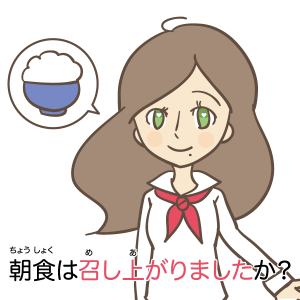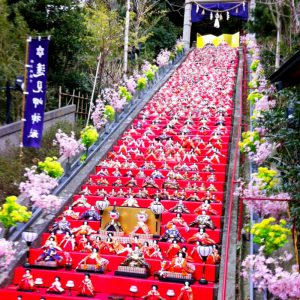Last time, you learned how to utilize Keigo (polite speech) in practice. If you are willing to work with Japanese people, it is important to behave properly depending on situations. Now, you know the proper way to communicate with people in conversation. Then, what should you do if you communicate with people or express your opinions in writing? In this lesson, we would like to pick up Japanese literary style.
Explanation for How Japanese Literary Style Works
| Table of Contents Conjugation Rule The Practical Usage |
When you talk with your friends, you usually use a casual tone, i.e. the plain (dictionary) form. When you talk with your superiors or people whom you are not familiar with, you need to use polite tone, i.e. the polite form, if necessary, the honorific and the humble form. Where does the literary style come into play? It’s in formal writings such as novels, essays, papers, business emails, etc.
Conjugation Rule
Nouns and Na-adjectives: Attach である (Instead of だ)
| Affirmative | Affirmative-Past | Negative | Negative-Past |
|---|---|---|---|
| 学生である | 学生であった | 学生ではない | 学生ではなかった |
| 元気である | 元気であった | 元気ではない | 元気ではなかった |
Only nouns and na-adjectives have their own literary style. Apart from them, the plain form and the literary style are the same. Be careful; this is one of the places where learners often make a mistake. All of the following are in the literary style.
学生である
元気である
食べる (*食べるである is wrong)
寒い (*寒いである is wrong)
On the other hand, when sentences end with だ, you can substituteである for だ. In addition to nouns and na-adjectives, there are some other expressions which end with だ. The major one is the explanatory のだ. In that case, you can even apply である for verbs and i-adjectives.
食べるんだ => 食べるのだ => 食べるのである
寒いんだ => 寒いのだ => 寒いのである
Some of us try to use the literary style in a formal speech by further conjugating である into the polite form.
だ =.> である => であります
じゃない =.> ではない => ではありません
The Practical Usage
It is not necessarily that you always use the literal style when you write something. For example, when people write a message to their friend on Facebook, everyone uses the plain form. In corporate weblogs, the polite form is more frequently used. The literary form often appears in formal writings like a thesis. However, regardless of situations where you write, the key to making natural expressions is consistency. Please keep a single form and don’t use different forms at the same time. Let’s look at an example below.
メロスは、村の牧人である。笛を吹き、羊と遊んで暮らしてきた。けれども邪悪に対しては、人一倍に敏感であった。きょう未明メロスは村を出発し、野を越え山越え、十里離れたこのシラクスの市にやってきた。
Melos was only a herdsman in a village. He spent everyday playing the flute and taking care of sheep. Yet he was more sensitive to ruthlessness than other people. He left the village before dawn, got across the fields and hills, and reached the city of Syrucs which was forty kilometers away from his village.
This is a quotation from a Japanese short story named “Run, Melos” (*written in old Japanese). There are four sentences with the single (literary style) form. In addition, when the author expressed sequential actions, he used the conjunctive form which is more formal than the te-form. It’s important to use words with the same level of formality. The following table shows the words you have learned so far with the counterparts.
| Formal | Casual | |
|---|---|---|
| Negative Form | ではない | じゃない |
| Perfect/Unexpected Actions | …てしまう | …ちゃう |
| …でしまう | …じゃう | |
| Te-form + いる | …ている | …てる |
| Quotation | …と | …って |
| Explanatory のだ | …のだ | …んだ |
| ば-form | 行けば | 行きゃ |
| Sequential Actions | 行き | 行って |
[adsense]
The Plain Form in Casual and Formal Writings
Since the plain form can be used in both casual and formal expressions, we would like to compare their usages here. The difference is clear. The following is an example of a message to a friend in casual tone.
今日はありがとう、すごく楽しかったよ。またみんなで集まれると最高だね。次の計画を早く立てよう。次は海に行ってバーベキューがしたいよ。それじゃまた。
Thank you for your time today. It was very fun. It will be best if we can gather together again. Let’s make the next plan soon. As for the next time, I want to go to the sea and have a BBQ. See you then.
As you can see, the sentence ending particles are often used. They are colloquial expressions, but your message won’t sound natural if you don’t use them in casual tone. Here, you use the te-form to express sequential actions. Now, let’s see the formal version.
今日はありがとう、非常に楽しかった。またみんなで集まれると最高だ。次の計画を早く立てよう。次は海に行き、バーベキューがしたい。それではまた。
The meaning remains the same as the casual one. However, the wording is different. The sentence ending particles have disappeared, which are not suitable for formal expressions. And, the words have changed from the casual ones to the formal ones, i.e. すごく => 非常に, 行って => 行き, and それじゃ => それでは.
An Exception of the Conjunctive Form: ており
| (Polite) お母さんは買い物に行っていて、しばらく帰ってこないです。 |
| (Literary) 母は買い物に行っており、しばらく帰ってこない。 |
Both of the meanings are “My mother went shopping and won’t come back for a while.” We would like you to focus on the conjugation for the sequential actions. The original form is 行っている which is the te-form + いる. When you conjugate ている into the conjunctive form, i.e. to drop ます from the polite form, we have to work differently. Theoretically, it should have been 行ってい. However, we first replaced いる with おる and then conjugated it into the conjunctive form: 行っており.
Summary
- The literary style is suitable for formal writings such as novels, essays, and papers.
- Only nouns and na-adjectives have their own literary style: である and ではない.
- For verbs and i-adjectives, the literary style and the plain form are the same.
- Consistency of a single form is the key to making natural expressions.
- It’s important to use words with the same level of formality.
The usage of the literary form should not be difficult. All you need to do is to conjugate nouns and na-adjectives. What you may struggle with is choosing words with the same level of formality. There ia a lot of vocabulary and you can acquire it by only exposing yourself to a lot of sentences. We will also pick up some of them in the coming lessons.

How Keigo (Polite Speech) Works in Conversation

The Ultimate Guide to Hinamatsuri Girl Power


